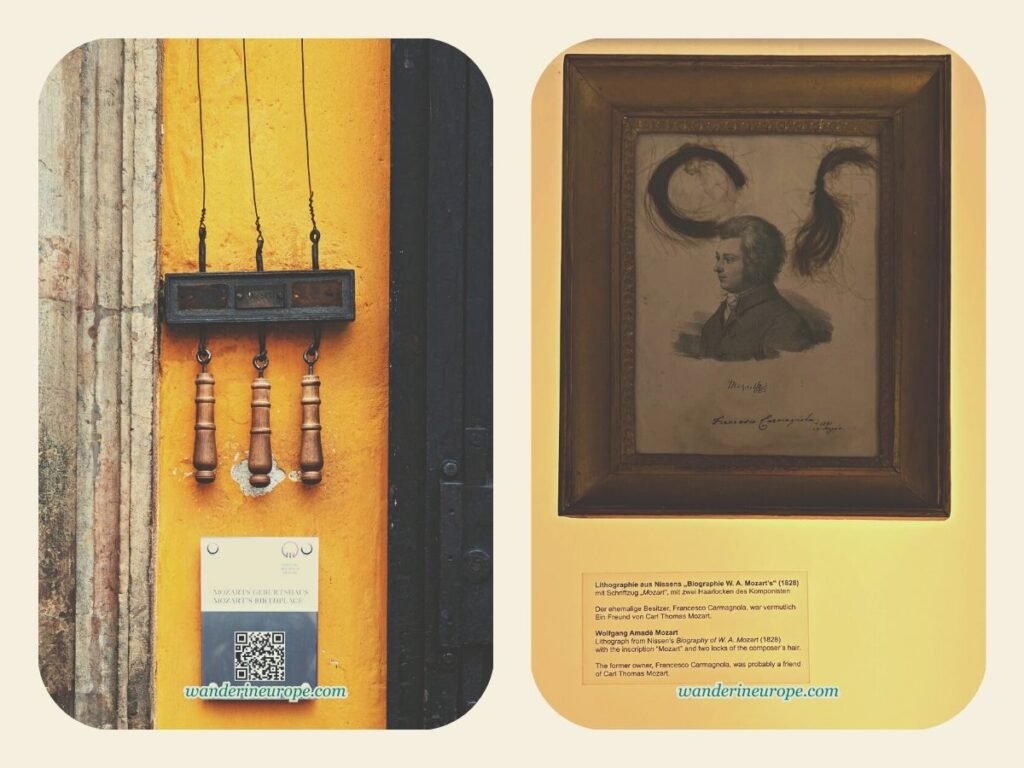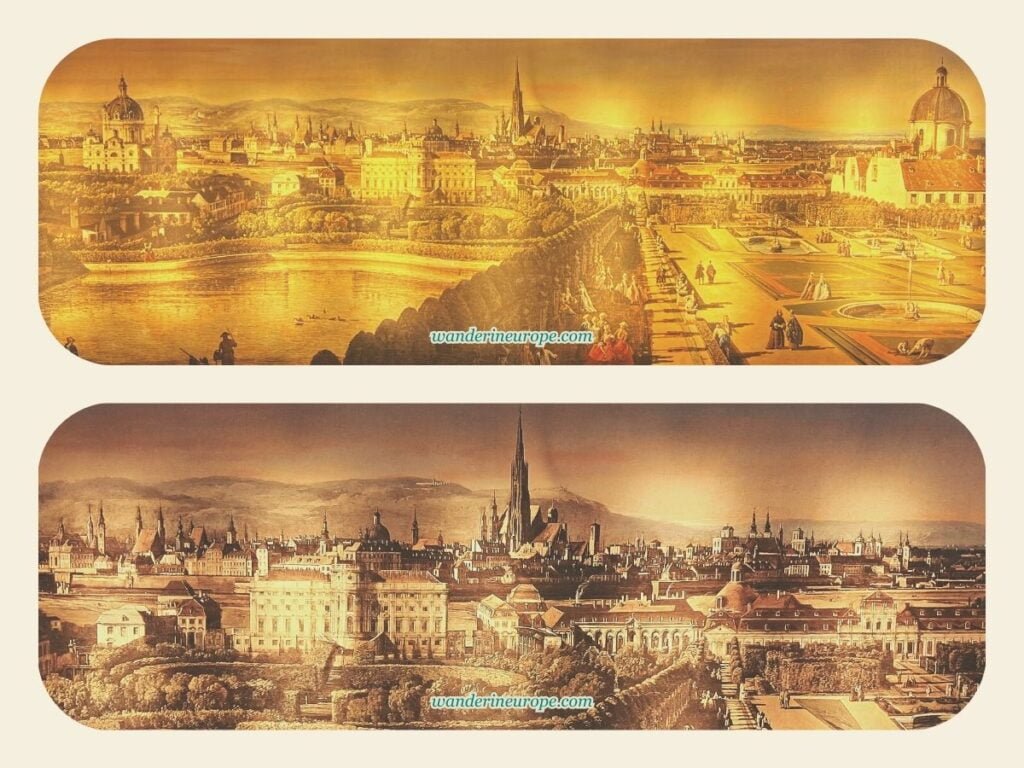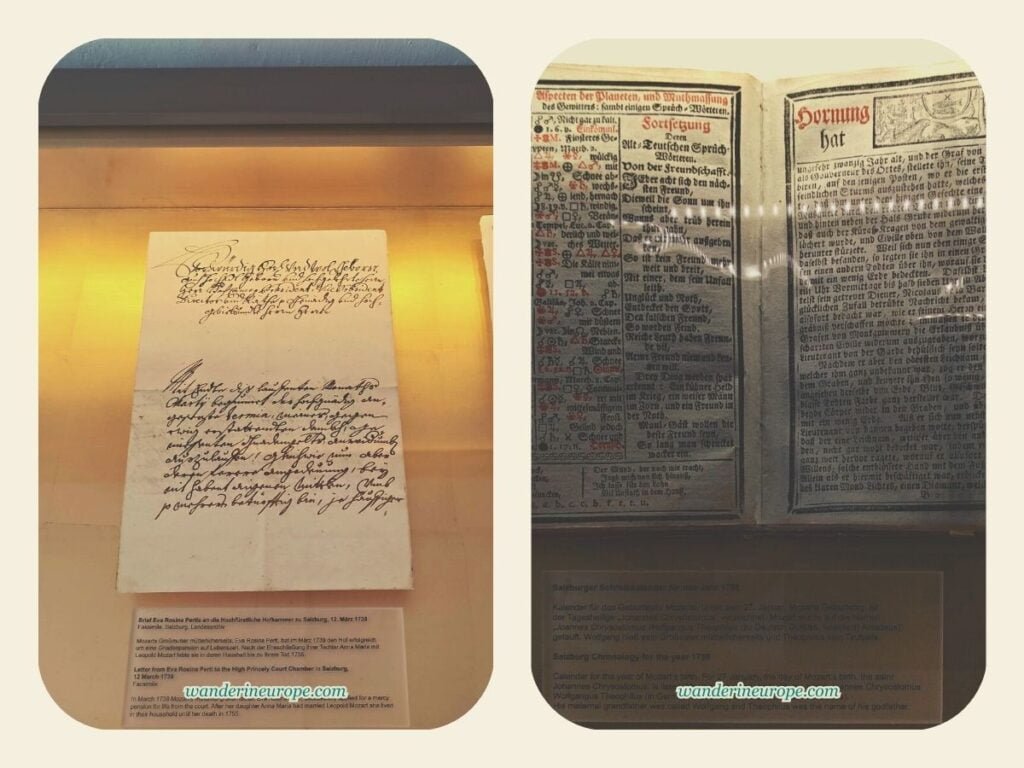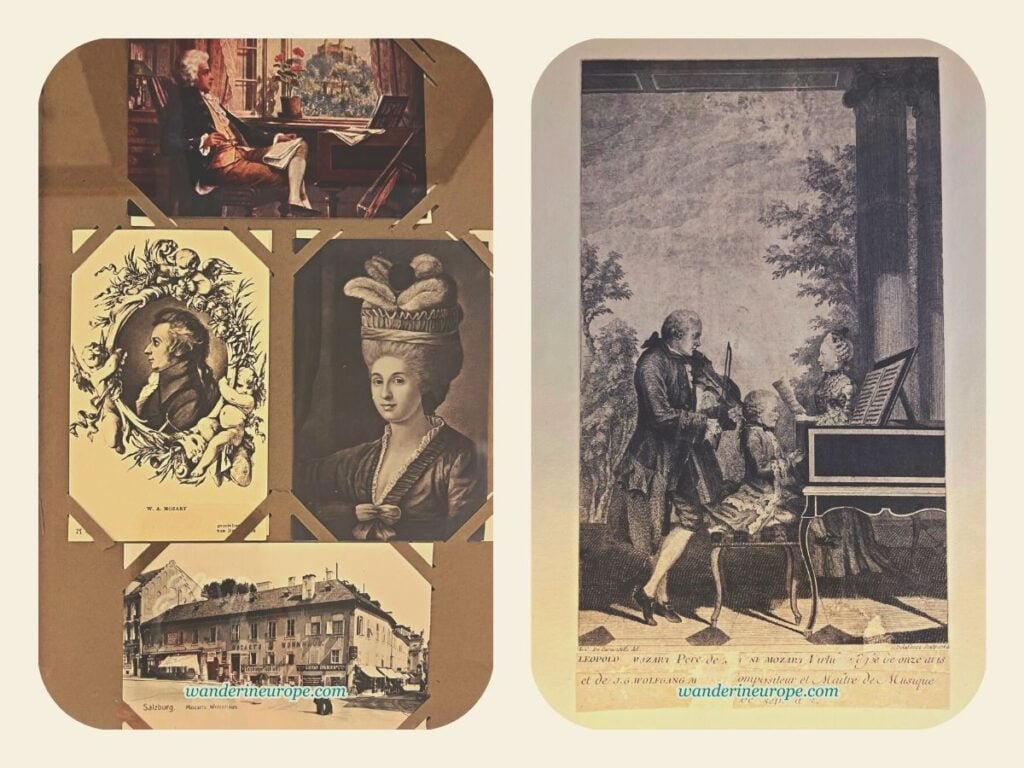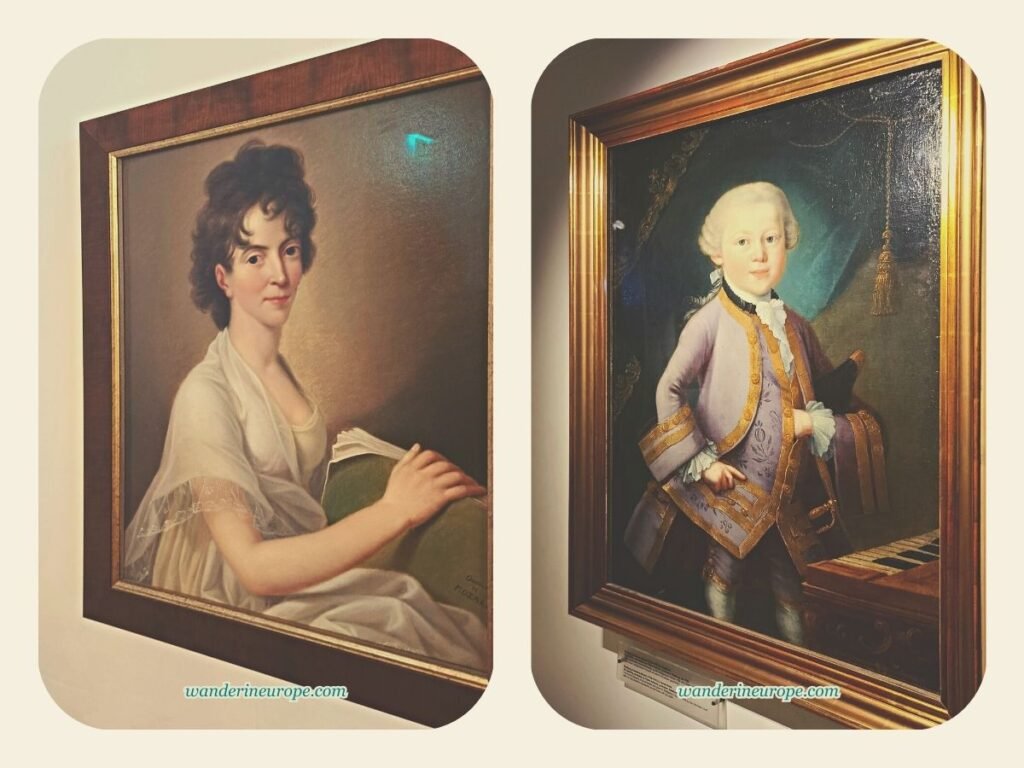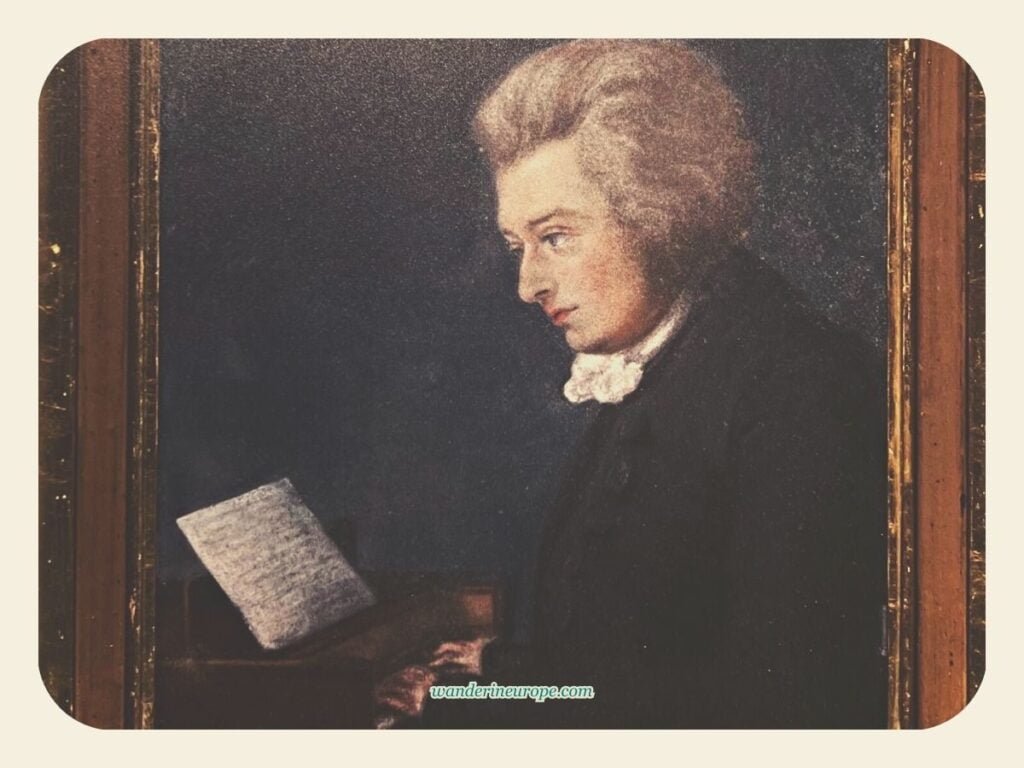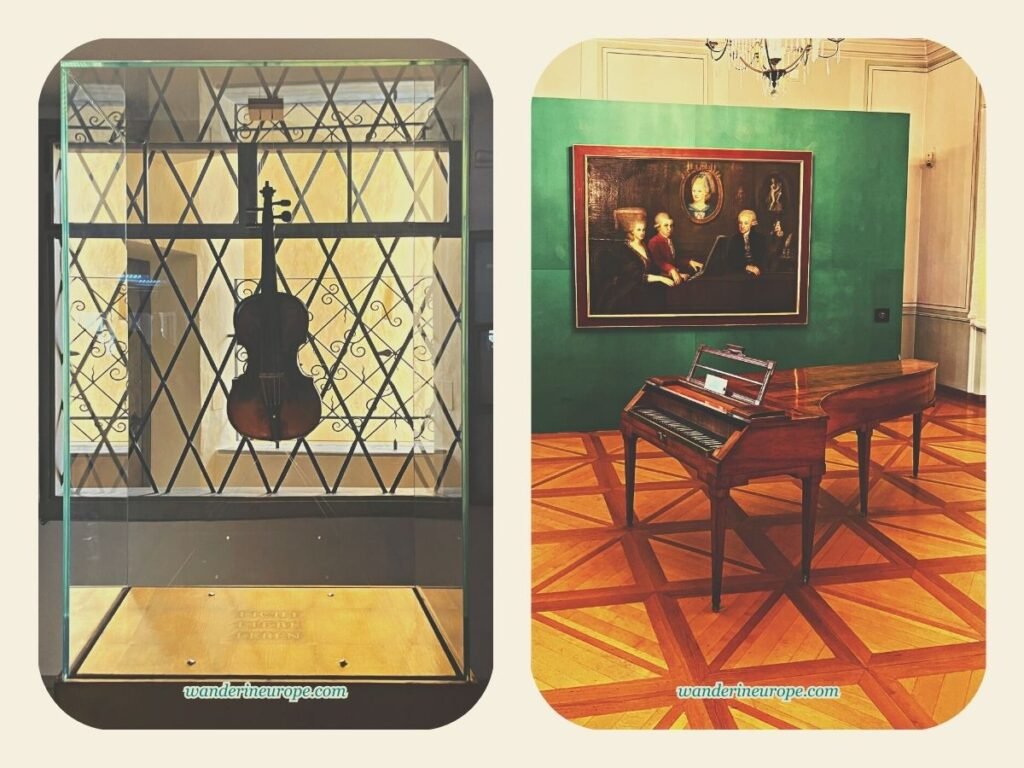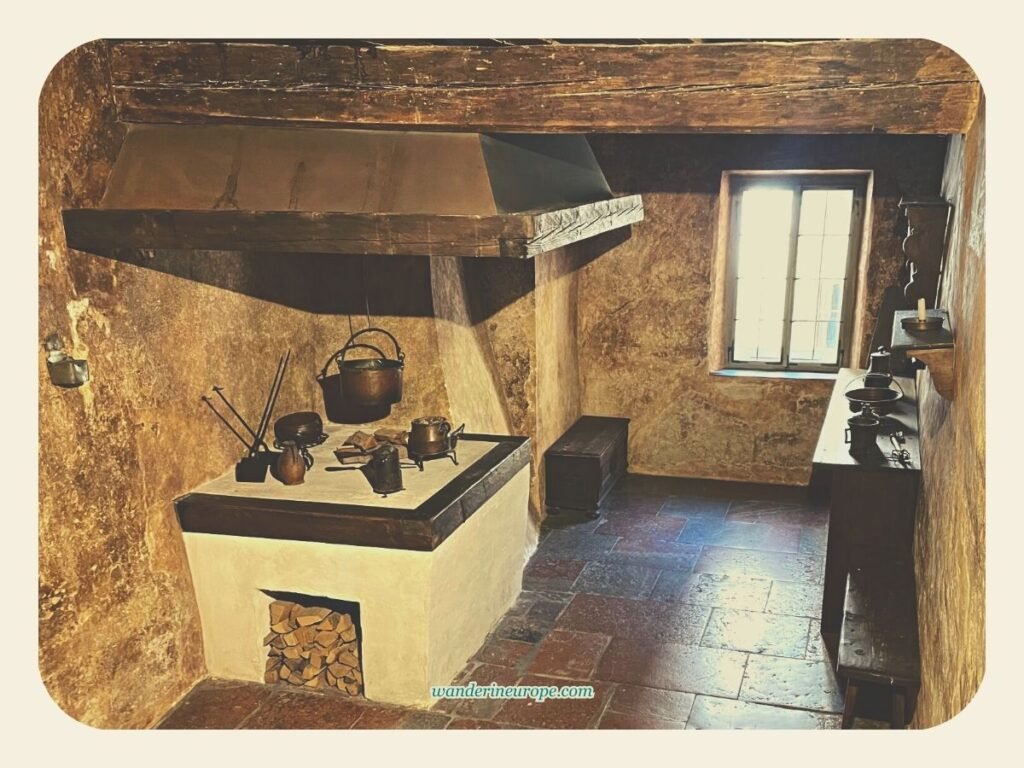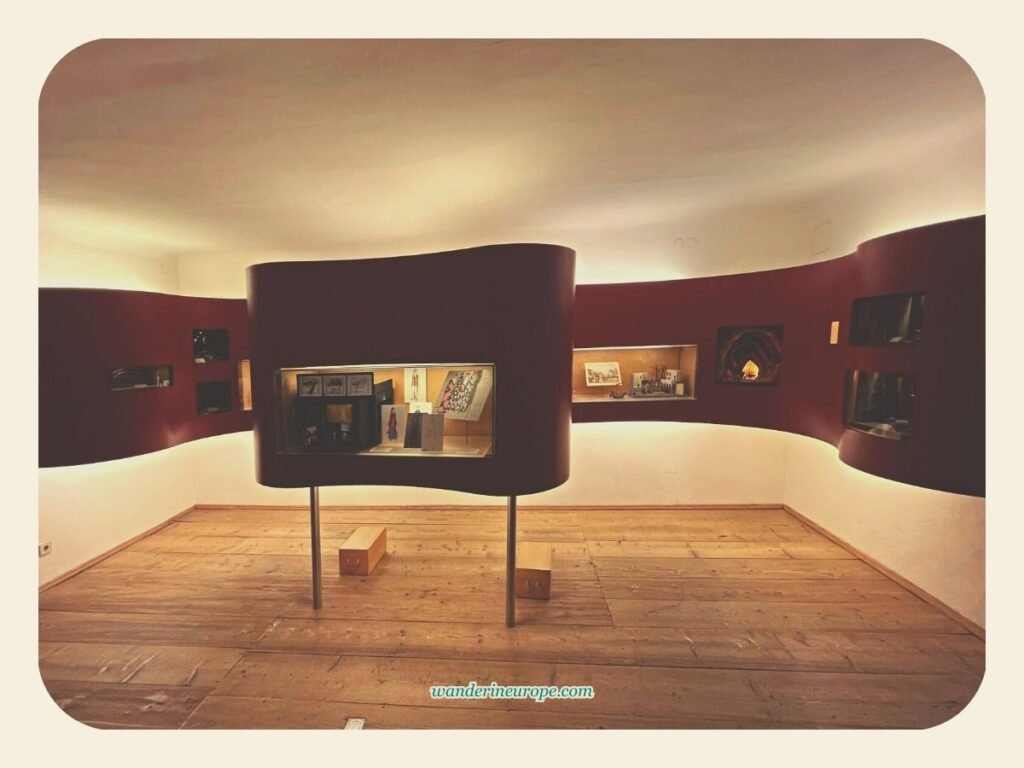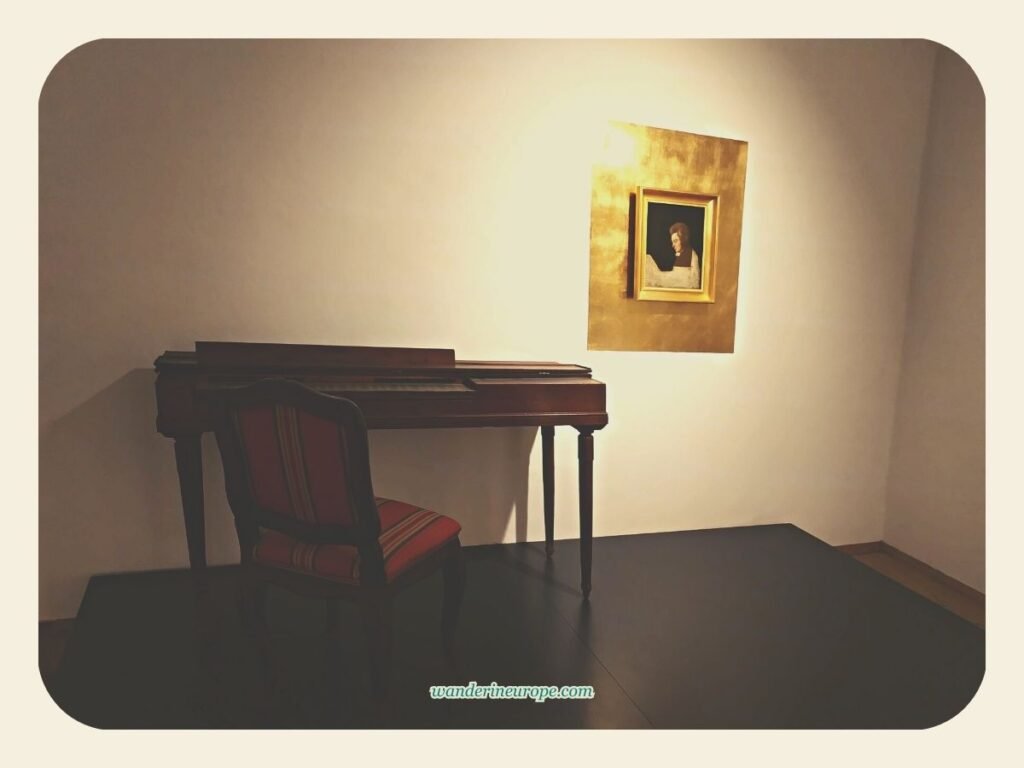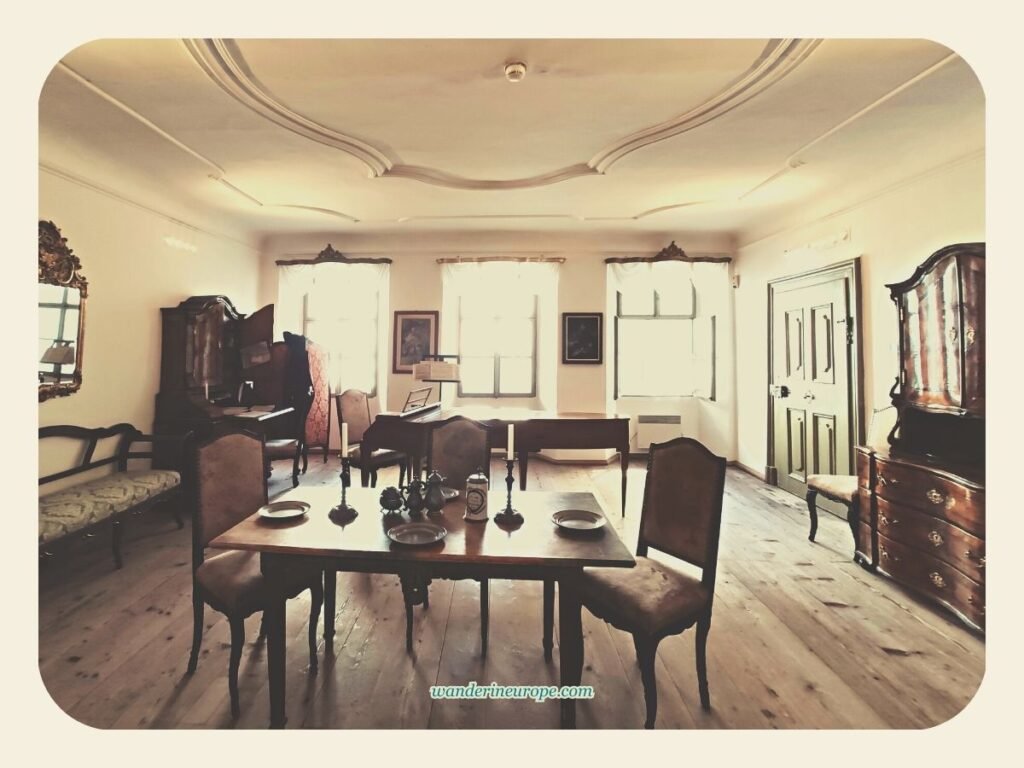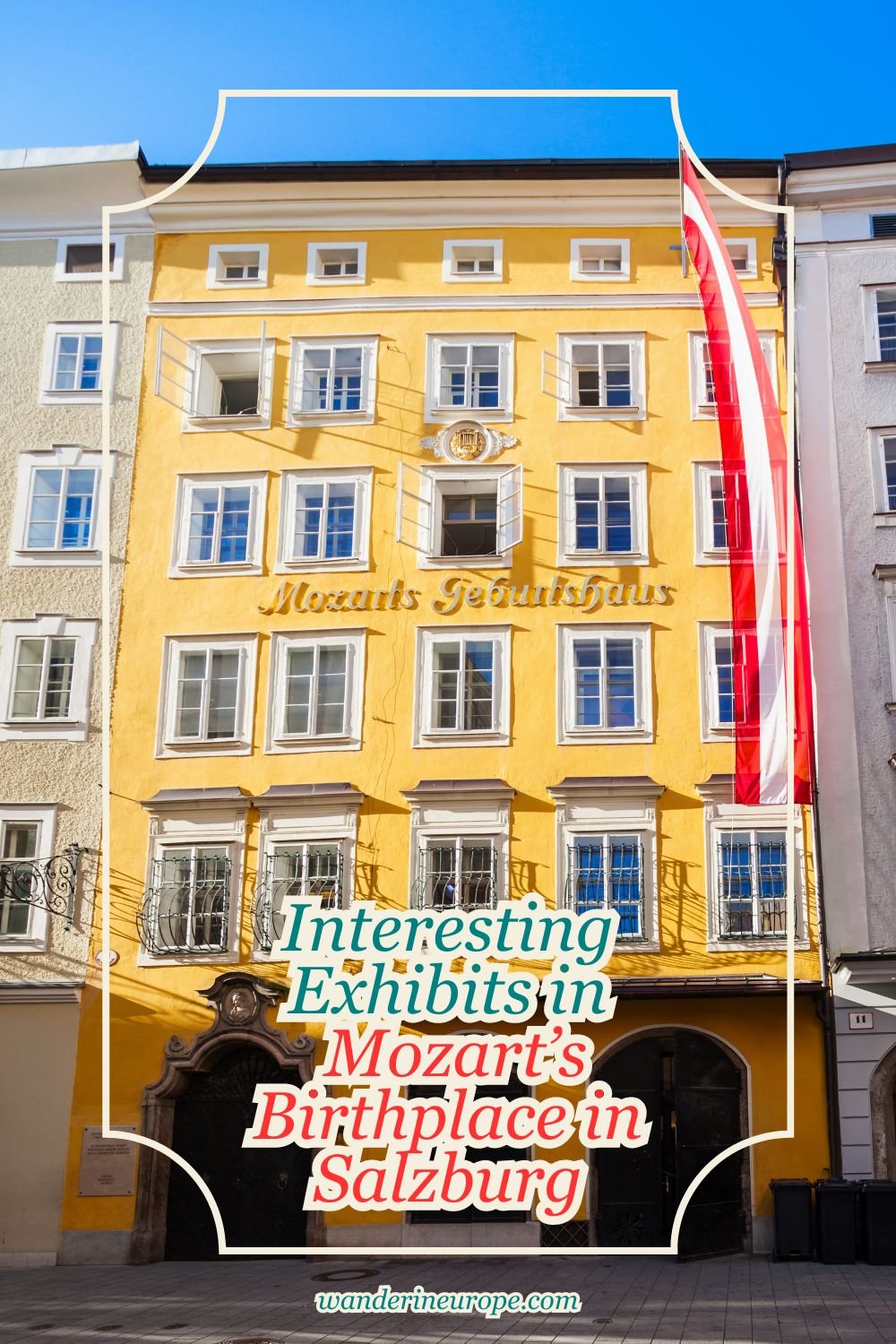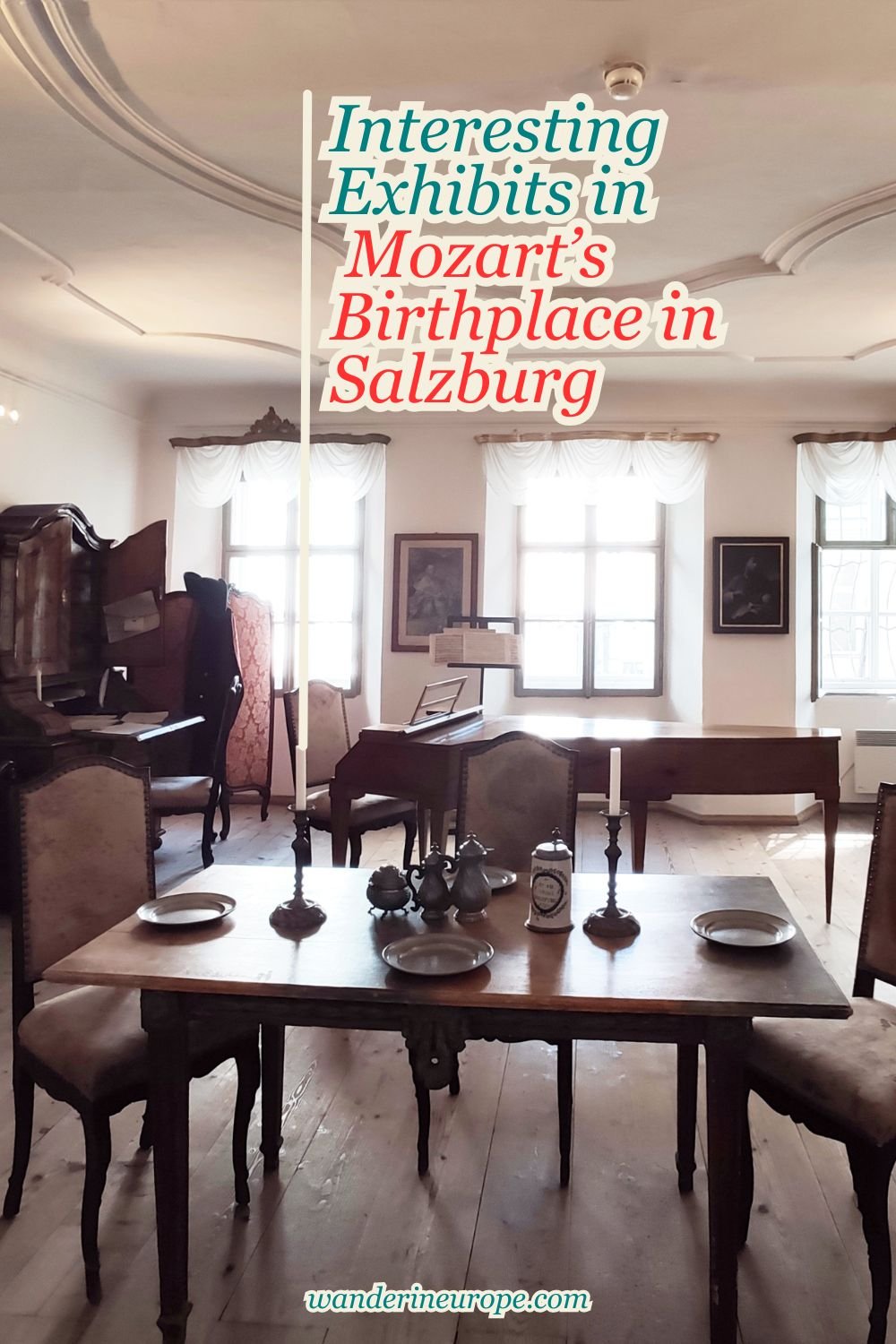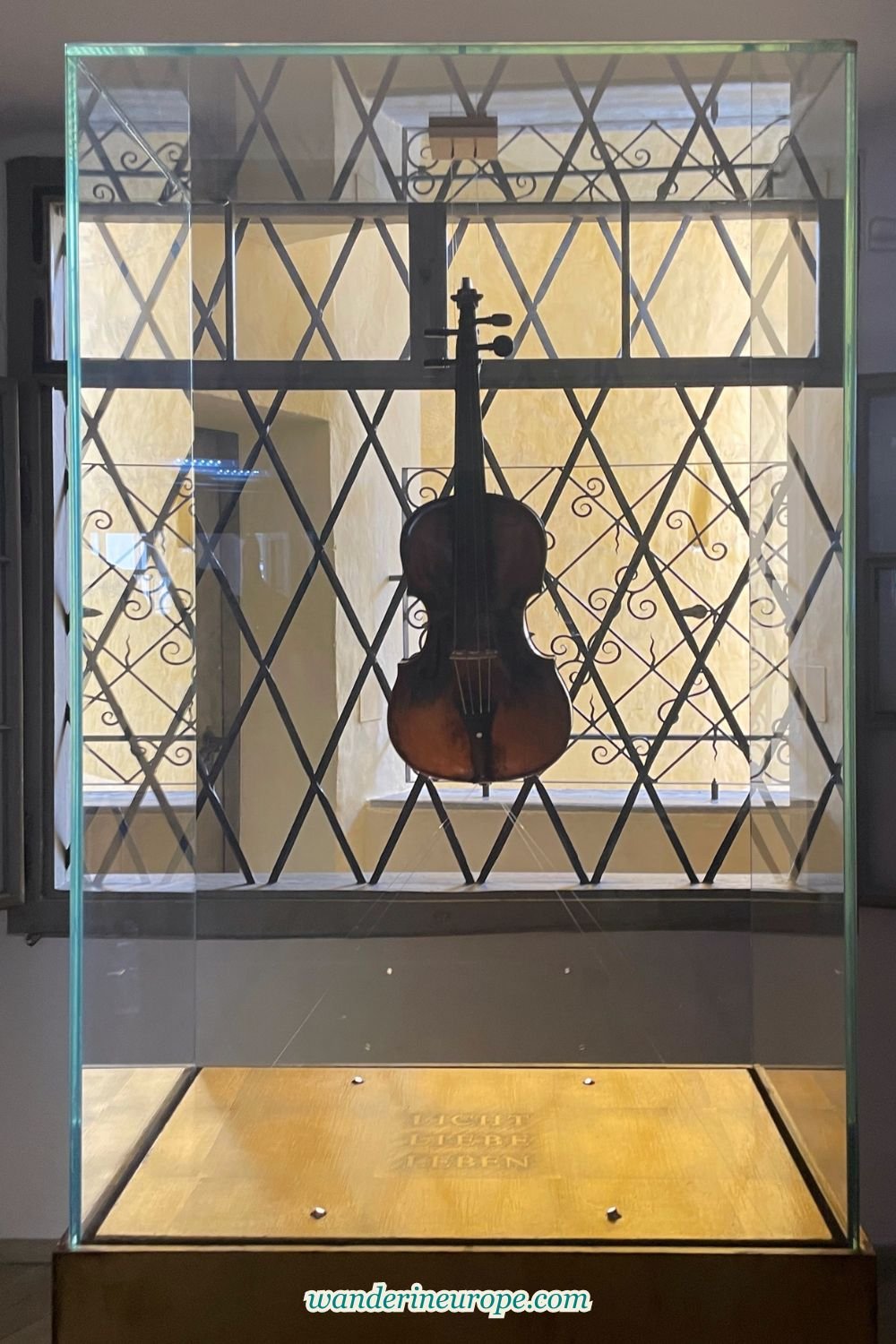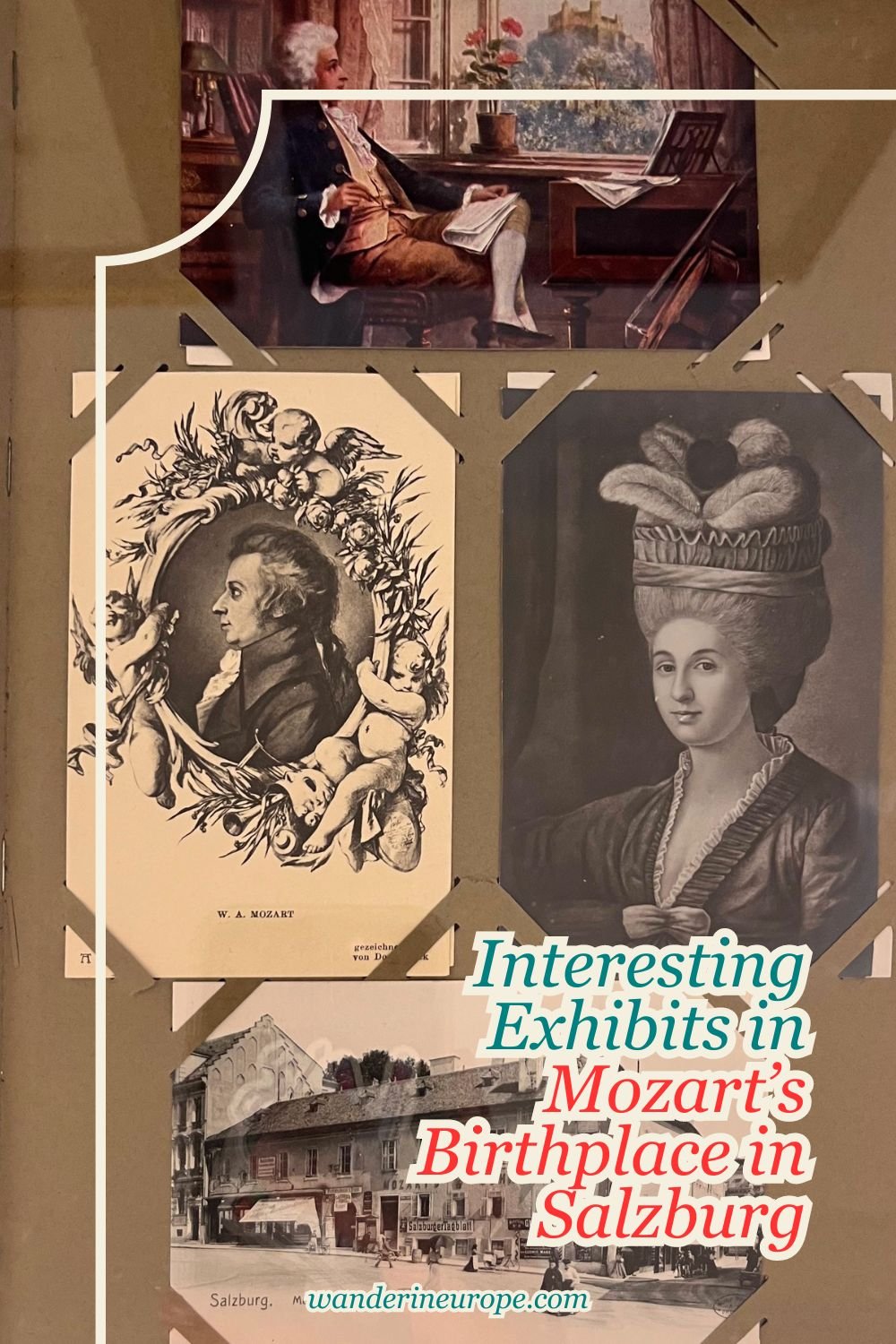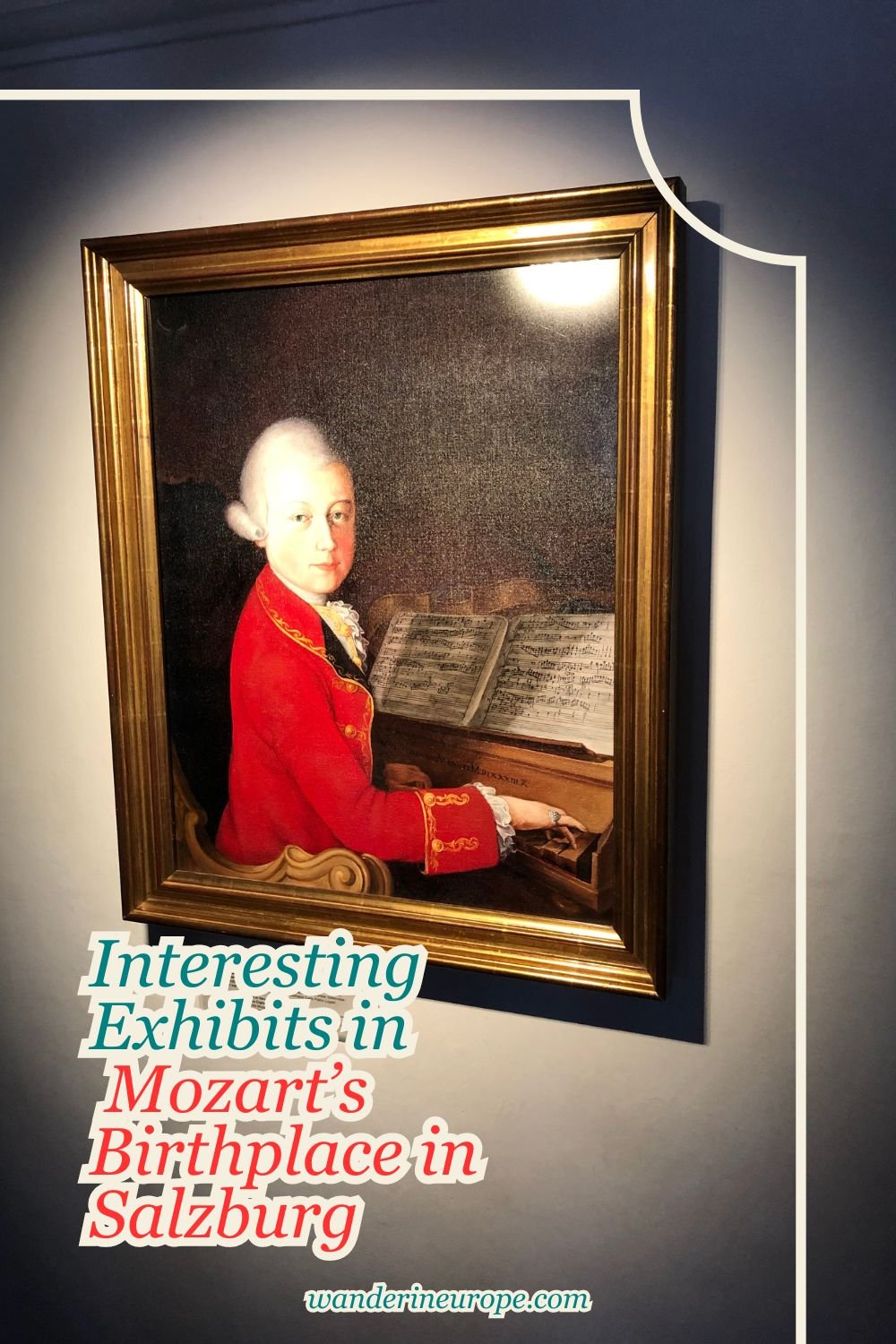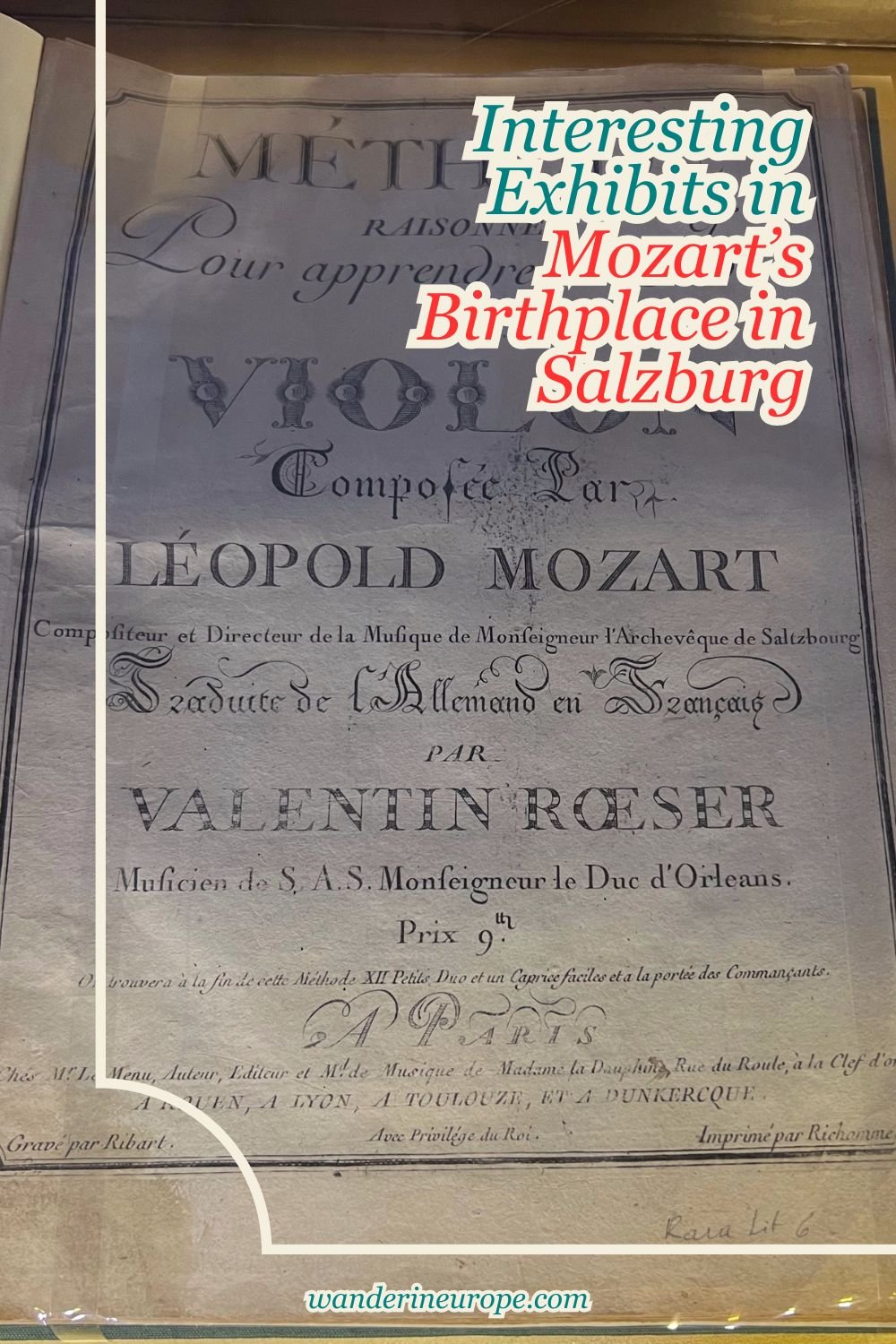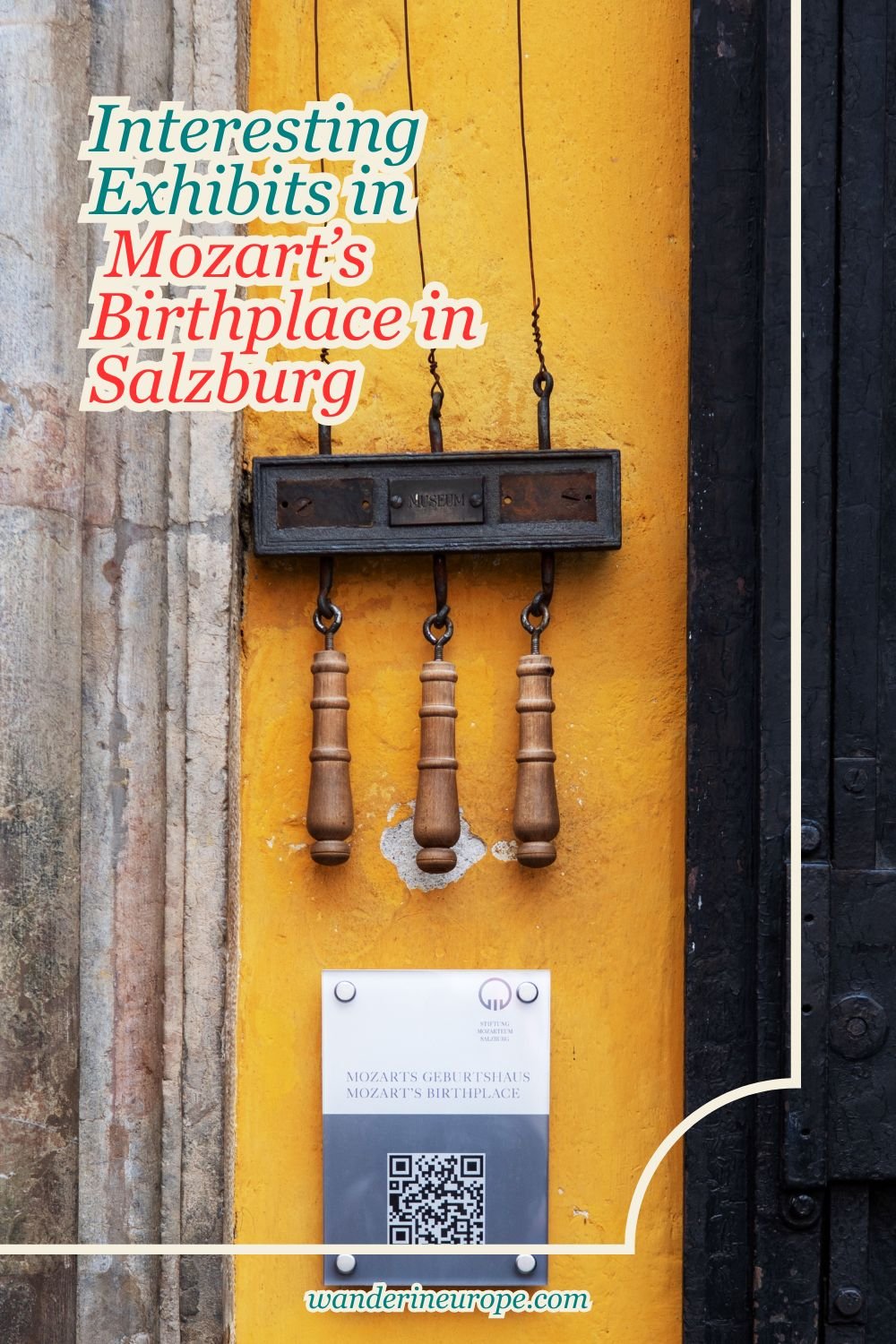Interesting Exhibits in Mozart’s Birthplace in Salzburg
WanderInEurope is reader-supported. Affiliate links and ads help us keep creating useful content for you.
Of the many interesting and beautiful attractions and landmarks in Salzburg, Mozart’s Birthplace (now a museum) was the first I explored. I chose Mozart’s Birthplace first because I wanted to discover something new. I’ve explored a few alpine towns (Lucerne, Interlaken, and Innsbruck) in a row — I thought I needed a twist.
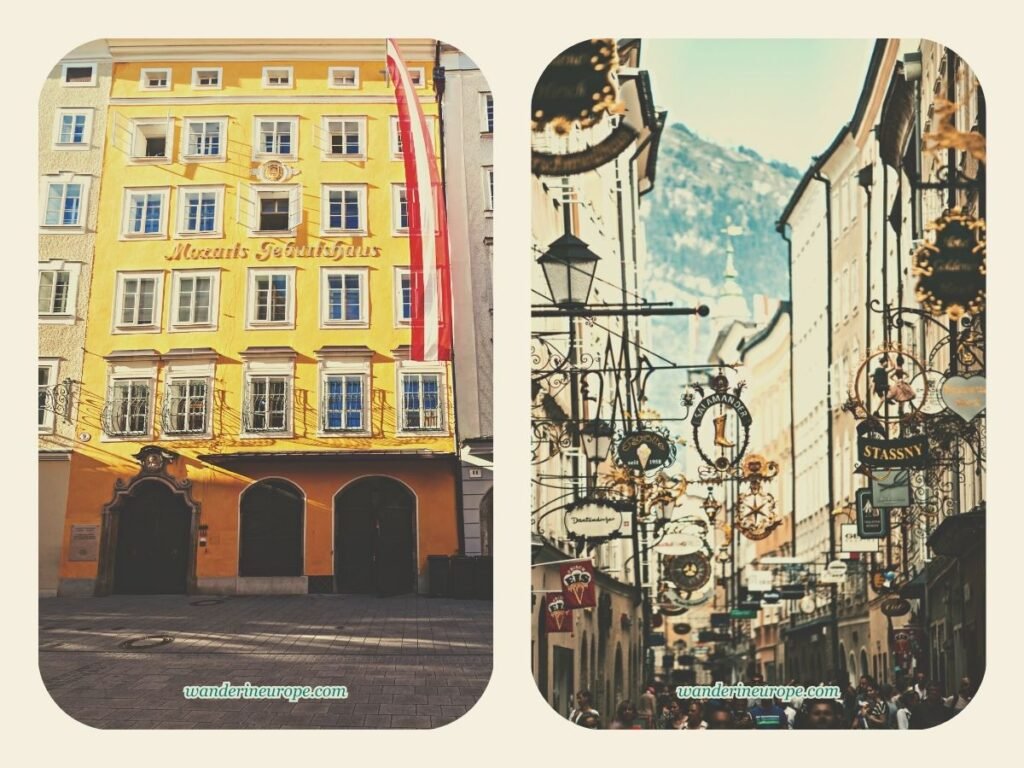

Inside Mozart’s Birthplace
Below is a sneak peek of what you’ll find inside Mozart’s Birthplace. A couple of the photos are from Mozart’s Residence, a site you can visit alongside Mozart’s Birthplace.


Good to know: There’s a combo ticket available that grants you access to both his birthplace and residence. But if you’re already a holder of the Salzburg Pass, there’s no need for additional tickets. Both these attractions are already included in the Salzburg Pass.
In summary, here is what you can expect visiting Mozart’s Birthplace: you’ll be given the chance to see all parts of the museum from third to first floor (they call it round-tour).
While Mozart’s birthplace itself is a small apartment, the museum dedicated to Mozart’s birthplace goes well beyond its original boundaries. The apartment covers an area of around 130 square meters and consisting of four rooms and a kitchen.
- After you acquire the tickets from the front desk, you’ll climb the stairs to the kitchen on the third floor, where the tour of the museum will begin.
- Then, room by room, you’ll explore the entire apartment of the Mozart family, including some permanent exhibitions. The exhibitions are about Mozart and his family. You’ll learn about his parents, siblings, wife, and kids. A big family tree, their personal possessions, and stories about their lives await.
- The tour continues to the second floor, where there are exhibits related to Mozart’s works and his connection to the theater. You’ll see pictures and objects that give insights into the musical performances of Mozart.
- Finally, the tour proceeds to the first floor, where visitors can learn more about Mozart’s early life and experience a middle-class living room. You can also find exhibits about Mozart’s life of traveling and his life in Salzburg.
Take a look: Budget-Friendly Salzburg Experiences Under $100 (opens in a new tab)

Visiting Information
- Mozart’s Birth Place Opening Hours: Mozart’s Birthplace is open daily from 9 am to 5.30 pm, with the last entry at 5 pm. From July 1st to August 31st, however, the museum opens earlier at 8:30 am and closes later at 7 pm, with the last entry at 6:30 pm.
- How long to visit Mozart’s Birthplace: Usually, a visit to Mozart’s Birthplace takes about one hour, checking every exhibition room and spending a few moments in the music room. If you’re really into Mozart and take the time to read every text description and listen to the full length of his music in the museum/audio guide, it may take you longer.
Disclaimer: Please make sure to visit the official website of Mozart’s Birthplace (linked in the resources section of this post) for any announcements and potential changes in opening hours before planning your visit. Also, be aware that sections of the museum may be temporarily closed due to events or renovation work, and the museum management reserves the right to close the museum on short notice.
From great hotel deals to skip-the-line tickets and affordable eSim to cheap rentals, click here for the best hotel deals and more travel discounts.
If you’re looking to immerse yourself in the beauty of Salzburg and discover the life of Mozart, consider joining one of the city tours. It’s a stress-free way to explore and enjoy all that the city has to offer.
- Salzburg: Life of Mozart Private Guided Walking Tour — Discover the life of Mozart on this private guided walking tour with a 5-Star Expert Guide. Visit Mozart’s Birthplace, see his original instruments, and learn about his fascinating life and musical career. See Mozart’s Monument, Salzburg Cathedral, Mirabell Palace, and more. Get exclusive tickets for an evening concert of Mozart’s compositions and skip-the-line tickets to Mozart’s Birthplace and free admission to the Mirabell Palace Garden. Book now for an unforgettable experience!
- Salzburg: Private City Highlight Tour with a Guide — Explore the best of Salzburg on this private city highlight tour. Enjoy colorful flowers in the Mirabell Garden, shop on Getreidegasse, marvel at the Salzburg Dom, learn about the Fortress Hohensalzburg, and discover the Mozart family in front of Mozart’s Birthplace.
For a convenient, unique, or more enriching visit, check out these experiences and services:

Explore Salzburg
Don’t just visit Mozart’s Birthplace—there’s so much more to see and do in Salzburg! Click on any of the topics below to start exploring.
More Information
For additional details about Mozart’s Birthplace, please see the links provided below.
- Official website (page) of Mozart’s Birthplace
- Mozart Museum App (Appstore)
- Mozart Museum App (Playstore)
- Entry tickets to Mozart’s Birthplace (Official Website)

Pin this to save it for later or bookmark it to read anytime.


